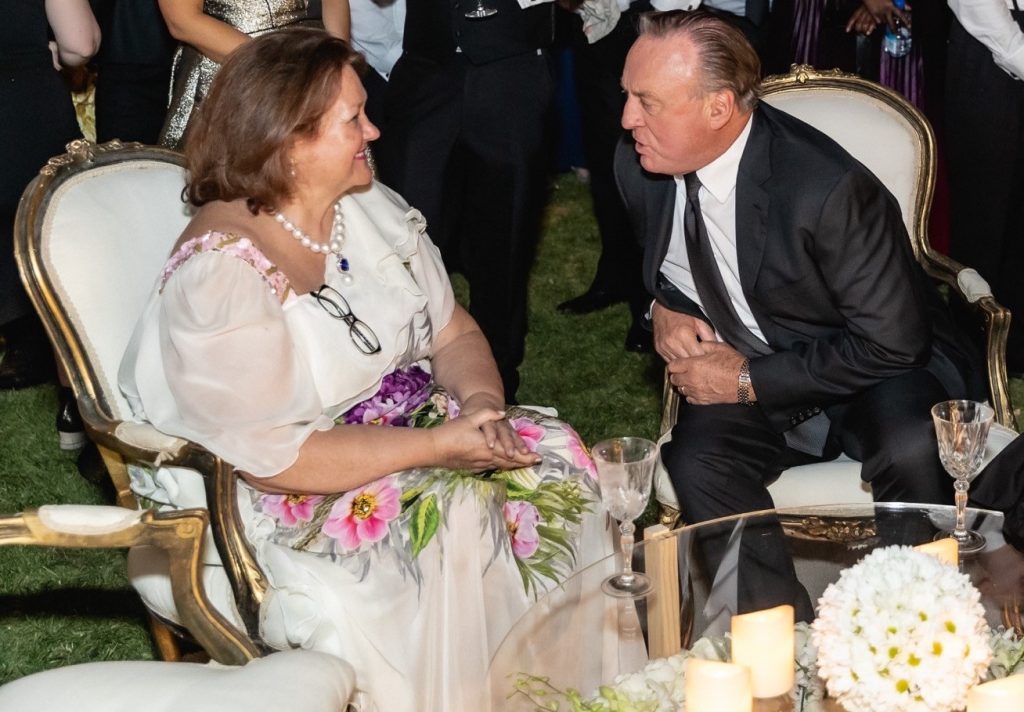Article by Peter Ker courtesy of the Australian Financial Review.

Australia’s most lucrative export industry will be able to dramatically increase shipments of iron ore after a long-awaited review of Port Hedland found its potential was 41 per cent higher than its officially licensed export capacity.
Gina Rinehart’s Roy Hill, Andrew Forrest’s Fortescue Metals and BHP Group have emerged as winners from the Western Australian government review, with those three exporters told their port allocations were likely to be increased by 25 per cent when the plans are finalised later this year
The increased allocations were virtually assured on Tuesday when the WA government endorsed a development plan that would allow Port Hedland to export 660 million tonnes of iron ore per year.

The new capacity would be 26 per cent higher than the 523 million tonnes of iron ore shipped last financial year and is well beyond the port’s long redundant official capacity of 495 million tonnes per year.
At current iron ore prices the increased capacity would notionally unlock $US23.38 billion worth of additional iron ore exports each year; but in reality miners would need to spend years and billions of dollars investing in extra mine and rail capacity to fill the port capacity, and the extra volumes would likely soften prices.
While the WA government has sought to share the extra capacity across all of Port Hedland’s major iron ore tenants, Mrs Rinehart’s companies have arguably done best out of the review, securing the hotly contested rights to a new berth called Stanley Point Berth 3.
WA Ports minister Rita Saffioti said Stanley Point Berth 3 would be awarded to a recently announced joint venture between Mrs Rinehart’s private company Hancock Prospecting and ASX listed company Mineral Resources.
The decision appears to reward a rare bout of co-operation between Australia’s iron ore oligarchs, which occurred in November when Mrs Rinehart and Mineral Resources talisman Chris Ellison vowed to work together under a joint venture if they secured the Stanley Point Berth.
The partnership between Mrs Rinehart and Mr Ellison helped both companies win the rights over Fortescue Metals Group, which had also bid to develop the berth, which will require dredging and expansion of a section of Port Hedland called South West Creek.
The WA government vowed a decade ago that future capacity and berths in South West Creek would be set aside for junior miners, all of whom have since folded or been acquired by the major Port Hedland tenants.
Stanley Point Berth 3, in particular, was reserved for Atlas Iron, which was acquired by Mrs Rinehart in 2018 after she beat Fortescue and Mineral Resources in a bidding war.
Fortescue did not come away empty-handed from Tuesday’s announcement, winning permission for a new shiploader at its Anderson Point hub within Port Hedland.
The exporters will need to build and pay for most of the extra infrastructure foreshadowed by Tuesday’s government announcement.
But with iron ore prices still high at $US141.75 per tonne, according to S&P Global Platts, investment in the infrastructure would likely be a formality.
Mr Ellison said Tuesday’s announcement was a key development in his company’s plan to “unlock stranded deposits” in WA’s Pilbara iron ore heartland.
Mrs Rinehart and Mr Ellison also struck a deal in December that would see a long-stalled iron ore project transported on Roy Hill’s railway to Port Hedland.
Known as the Hardy project, the agreement was the latest in a series of moves in 2021 to bring the disparate assets of the Australian Premium Iron (API) joint venture to market.
The API assets had laid idle since they were acquired by China’s Baowu and Aurizon in 2014 after a plan to consolidate them into a single iron ore mining, rail and port project struggled to stack up.
The disparate assets now look set to be developed opportunistically, with some in the West Pilbara expected to use the new port Mineral Resources is building at Ashburton while others like the Hardy project will use Roy Hill’s infrastructure at Port Hedland.
Rio Tinto is Australia’s biggest iron ore exporter, but was not directly affected by Tuesday’s announcement as it does not use Port Hedland.















